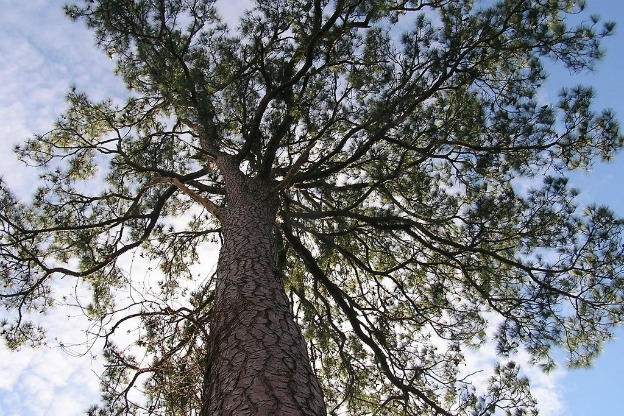
Using a Virginia Department of Forestry tree seedling, a team of scientists from across the nation has decoded the genome of a loblolly pine tree. With 22 Billion base pairs, this is the largest genome ever sequenced (in comparison, the human genome has 3 Billion base pairs).
Led by Dr. David Neale, professor of plant sciences at the University of California, Davis, the scientific team – using the tissue from a single VDOF pine seedling – broke down the tree’s DNA into smaller, more manageable data pieces and analyzed them with a super-computer. The team then re-assembled the pieces, figured out which genes were present, where they are on the genome, and what they do. This new approach, developed at the University of Maryland, enabled researchers to perform such a large and complex genome sequencing.
“It’s a huge genome,” said Dr. Neale. “But the challenge isn’t just collecting all the sequence data. The problem is assembling that sequence into order. The contribution of loblolly pine tree selection 20-1010 from the Virginia Department of Forestry was critically important not only for the genome sequencing, but more so for all those who follow and will now have completely open access to data and germplasm resources. Researchers worldwide should be very grateful to the Virginia Department of Forestry.”
The Loblolly pine, grown in the orchard at VDOF’s New Kent Forestry Center, was selected for sequencing because of its broad distribution, economic value and long history of genetic research.
Jerre Creighton, VDOF’s research program coordinator, said, “Loblolly pine is the most common tree species in Virginia and the most commercially important tree in the United States. It’s the primary source of pulpwood (used to make paper) and sawtimber (lumber). Today, Loblolly pine is being developed as a potential feedstock for the emerging biofuel industry.”
The results of this research will help scientists breed improved varieties of Loblolly pines, some of which will be more resistant to pathogens, such as fusiform rust – the most damaging disease of southern pines.
“The possibilities are endless now that we know the Loblolly pine genome,” said Creighton. “And what an honor for the Virginia Department of Forestry to have been selected to provide the tree that unlocked the vast genetic code of this important species!”
With nearly 16 million acres of forestland and more than 103,000 Virginians employed in forestry, forest products and related industries, Virginia forests provide an overall economic output of more than $17 Billion annually.
The Virginia Department of Forestry protects and develops healthy, sustainable forest resources for Virginians. Headquartered in Charlottesville, the Agency has forestry staff members assigned to every county to provide citizen service and public safety protection across the Commonwealth, which it’s been doing now for 100 years.


